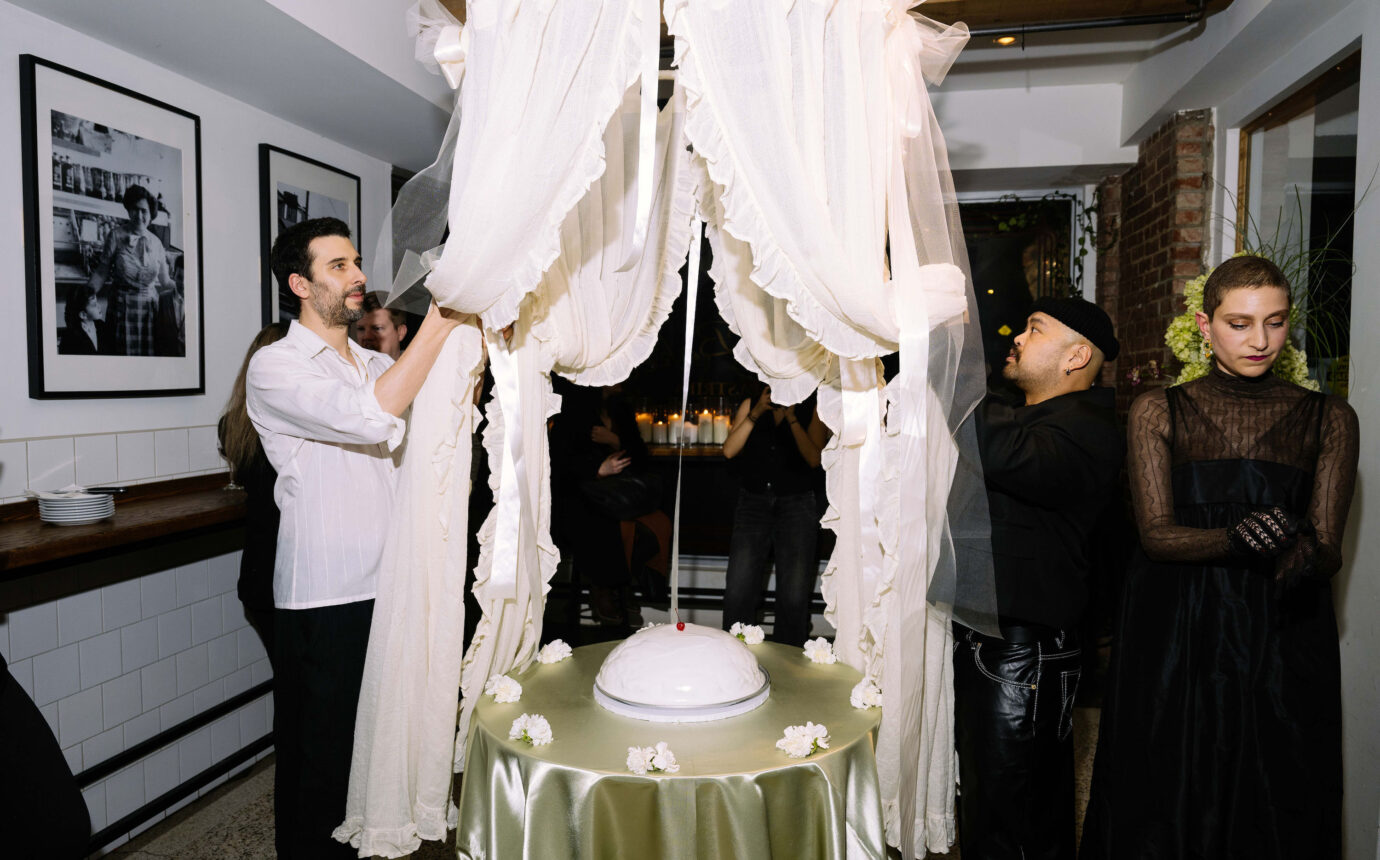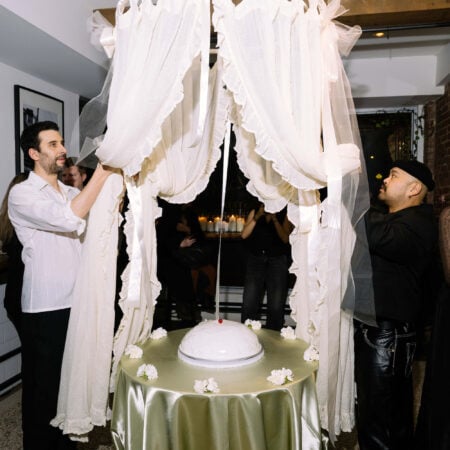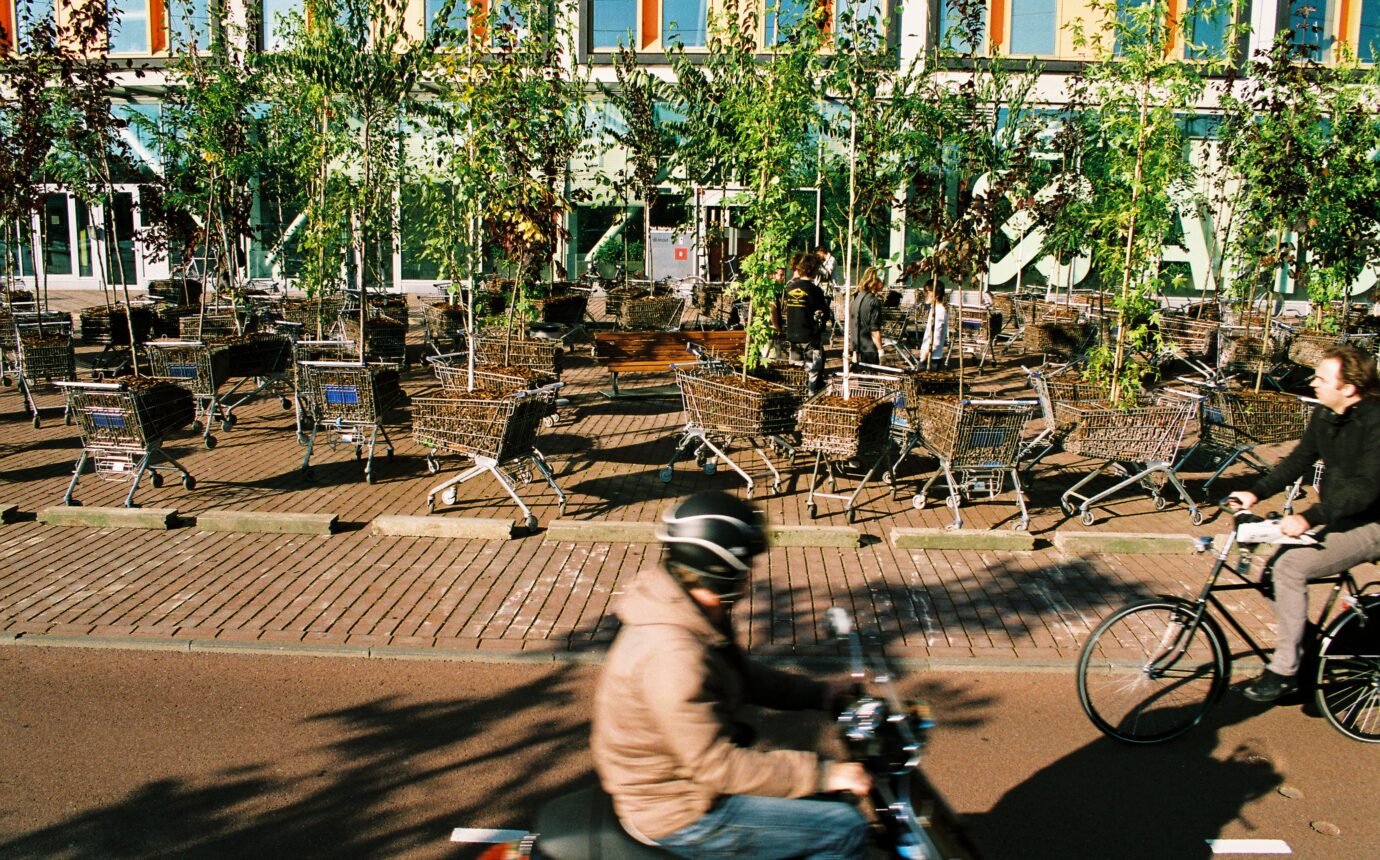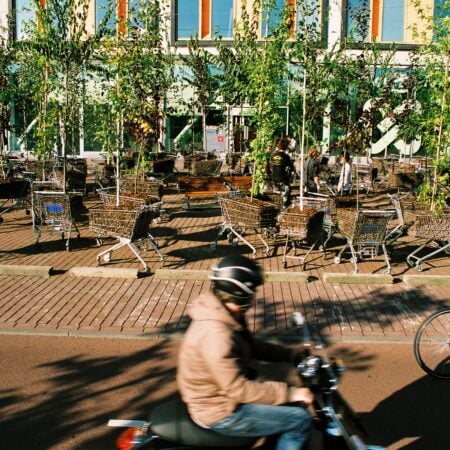At Tre Mari, the Past and Present Break Bread


How this decades-old family-run bakery on Saint Clair West is evolving while keeping its old-world soul intact
One evening in early February, I jay-walked across the streetcar tracks to Tre Mari Bakery, its shopfront beckoning with the glow of what seemed like a hundred flickering candles. I joined the others gathered inside and kissed my hands to the feet of Saint Agatha, or rather a sculpture of her, flanked by candelabra. The sides of the cake fridge (where I usually pick up an Italian rum) were also adorned with her stained-glass image, and I walked around the fog-misted interior towards a Baroque feast furnished with trays upon trays of soppressata, bocconcini, roasted peppers and all kinds of goodness. Towards the end of the evening, the white veil around what resembled a massive baby crib was pulled back to reveal a blown-up version of a popular pastry. My mother always called these confections topped with a candied cherry (her favourite) “sospiri”. But the didactics on the wall revealed them to be minne di Sant’Agata, or the breasts of Saint Agatha, which, legend has it, were sliced off by a Roman official whose advances she’d rebuffed.
What in heavens was I partaking in?
Before I go further, I need to make a full disclosure: Like most everyone who grew up on Saint Clair Ave W, I have been a patron of Tre Mari Bakery since I was a child. The beloved haunt has been a fixture of my parents’ neighbourhood for 65 years. When my mother’s uncle visited from Italy some 30 years ago, he headed there straightaway to hug its owner, Jim Deleo, a paesano from our town in Calabria. But it only became clear to me recently just how special this place is—and that has a lot to do with both its history and its present, two intertwined identities that have made it an uncommon gem in a city where storefronts are always changing.
“Our grandfather started as a butcher, while our grandmother, Mary, ran the grocery store,” Frank Deleo tells me. “She was the heart of the business—connecting with salespeople, managing the cash register, and taking care of four kids at the same time.” Franco and his brothers—John Paul and Alessandro—now pretty much run the place, with their mom, AnneMarie, ever a warm, convivial presence. “We’ve been part of Tre Mari our whole lives. It was always our first job—as kids, we’d work the cash register, fill cannoli, and help out wherever we could. By the time we were 15 or 16, we were working more consistently—after school, on weekends—learning every part of the bakery.”
Though the bakery had undergone gradual changes over the years, its outward appearance saw its first significant transformation in 2018. What had been a rustic little place where people jostled for attention at the pastry counter spread out with more spots to shop, sit and eat—and clever, cute signage to orient the experience. Though the idea to expand was already in the air—“Right up until a few months before he passed, my Nonno would come in and say, ‘We need to break that wall down!’”—it solidified for Franco and his brothers their roles as stewards. And part of their leadership has been to smartly yet meaningfully bridge Old World charm and a modern sensibility. While Tre Mari is still full of no-nonsense nonnas, these days artistic vignettes fill the vitrines, Matty Matheson’s sauces are stocked on the shelves, the cannoli now come in fun flavours like Limoncello and Sambuca, and an event like the Feast of Saint Agatha, an ode to a third-century virgin martyr, brings in the regulars and the artists. All without an ounce of pretension.
To plan the cultural programming, Franco, who leads Tre Mari’s marketing and creative direction, has formed a collective with Ariane Leazza, the brains behind the Instagram account That Nonna Life; curator Patricia Ritacca; Franco’s husband, Mark Savoia; floral designer Stefanie Cianchino; and Michael Madjus, also known as the marketing force of DesignTO. “We work with a lot of artists, designers, musicians and curators, and that’s been a game changer,” says Deleo. “When you bring in new perspectives, it opens up possibilities I never would have thought of—like hiring a DJ to play behind the hot table at our Cantina Jam or transforming the bakery into a nighttime event space.”
He and his brothers are also, of course, deeply invested in the core business—and making their forebears proud. “Our late father, Joseph Deleo, passed away when we were young, but his presence is still deeply felt in the bakery. We even found a list of things he wanted to achieve for Tre Mari, and as we continue evolving, we find ourselves checking things off that list, making sure his vision lives on in what we do.”







































